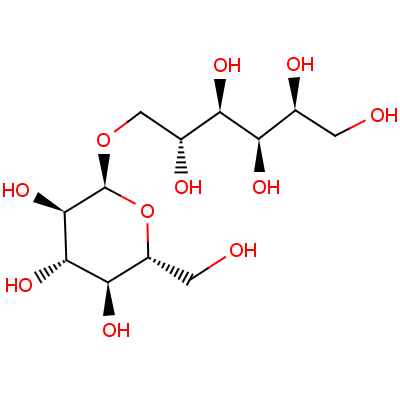Isomalt
Inquiry
| Post Date: | Sep 30,2016 |
| Expiry Date: | Sep 30,2017 |
| Detailed Description: |
Cas No. :534-73-6
Quantity: 200 Specs:GPS+GPM-Content ≥98.0%(max.102%) Payment Method: tt lc dp Isomalt CAS No.: 534-73-6 Other Names:Isomalt, 6-O-alpha-D-Glucopyranosyl-D-glucitol MF:C12H24O11 EINECS No.: 208-605-3 FEMA No.:3297 Molecular Weight:344.31 Appearance: white crystalr Purity: 99% Package: 25kg/drum or as per customer's requirement Isomalt is an excellent tasting sugar-free sweetener. Products made with isomalt have the same texture and appearance as those made with sugar. Derived from sugar, isomalt’s health benefits and stability make it a versatile and valuable ingredient for numerous reduced-calorie foods and pharmaceuticals. Result of Inspection: Test Item Standard Q/WKT0003S-2010 Test Result GPS+GPM-Content ≥98.0%(max.102%) Of which 43-57% is GPS 98.4%(GPM=50.4%) (GPS=48.0%) Water (free and crystal) ≤7.0% 2.6% D-sorbitol ≤0.5% 0.2% D-mannitol ≤0.5% 0.2% Reducing sugars (as glucose) ≤0.3% 0.09% Total sugar (as glucose) ≤0.5% 0.15% Related products ≤2.0% 1.0% Ash content ≤0.05% 0.02% Nickel ≤2 mg/kg <2 mg/kg Arsenic ≤0.2 mg/kg <0.2 mg/kg Lead ≤0.3mg/kg <0.3mg/kg Copper ≤0.2 mg/kg <0.2 mg/kg Total heavy metal (as lead) ≤10 mg/kg <10 mg/kg Aerobic bacterial count ≤500 cfu/g 10cfu/g Coliform bacteria ≤3 MPN/g Negative Causative organism NEGATIVE None Yeasts and moulds ≤10 cfu/g <10cfu/g Particle size Min.90%(between 0.830mm and 4.750mm) 92% 3. Isomalt Function Lower Caloric Value: For food labeling purposes in the United States, an energy value of only 2 calories per gram is used for isomalt. Isomalt's lower caloric value is partly due to the fact that intestinal enzymes are not able to easily hydrolyze its more stable disaccharide bond. Less of it is digested and, therefore, less absorbed from the small intestine into the blood, and this happens slowly. Supports Gut Health: Daily intake of 30 g isomalt was demonstrated to promote an increase of the “good” bacteria in the large intestine, the bifidobacteria, demonstrating the prebiotic effect of isomalt. The water-binding property of isomalt may influence the structure of the content of the gut, making it softer. If the consistency of the feces is too soft, it can be regulated by cutting down intake and allowing some time for adaptation. Like dietary fibers, isomalt is broken down by the gut bacteria to so called short chain fatty acids (SCFA) and gases. SCFA have the advantage of decreasing acidity in the large intestine and some SCFA are discussed as being beneficial for a healthy epithelium in the large intestine. Less Dental Caries Risk: Isomalt is anti-cariogenic and does not promote dental caries, because oral bacteria cannot readily convert it into decay causing acids. Therefore, the acidic conditions that lead to tooth demineralization do not develop after consuming isomalt, as occurs after eating sugar and other fermentable carbohydrates. Furthermore, isomalt cannot be converted by oral bacteria into polyglucan, the substance from which dental plaque is synthesized. 4.How Isomalt is Made The two-step process begins with sucrose. First, an enzyme rearranges the linkage between glucose and fructose in sucrose. In the second step, two hydrogens are added to an oxygen in the fructose portion of the disaccharide. Approximately half of the fructose portion of the original disaccharide is converted to mannitol and about half of the fructose portion of the original disaccharide is converted to sorbitol. Therefore, isomalt contains two different disaccharide alcohols: gluco-mannitol and gluco-sorbitol. The molecular changes that occur in these steps make isomalt more stable – chemically and enzymatically – than sucrose. Isomalt’s stability is the reason for many of its health benefits and the large variety of products which it can improve. |
| CAS Registry Number: | 534-73-6 |
| Synonyms: | Isomaltitol;6-O-alpha-D-Glucopyranosyl-D-glucitol;D-Glucitol, 6-O-alpha-D-glucopyranosyl-;1-O-hexopyranosylhexitol; |
| Molecular Formula: | C12H24O11 |
| Molecular Weight: | 344.3124 |
| Molecular Structure: | 
|
| Company: | Qingdao Natural Resources Industrial Co ltd [ China ] |
| Contact: | Barton |
| Tel: | +86-532-89288855 |
| Fax: | |
| Email: | barton@selectedchem.com |
-
Disclaimer statement:The information and data included above have been realized by the enterprises and compiled by the staff, and are subject to change without notice to you. The Chemnet makes no warranties or representations whatsoever regarding the facticity, accuracy and validity of such information and data. In order to ensure your interest, we suggest you chose the products posted by our gold suppliers or VIP members.


